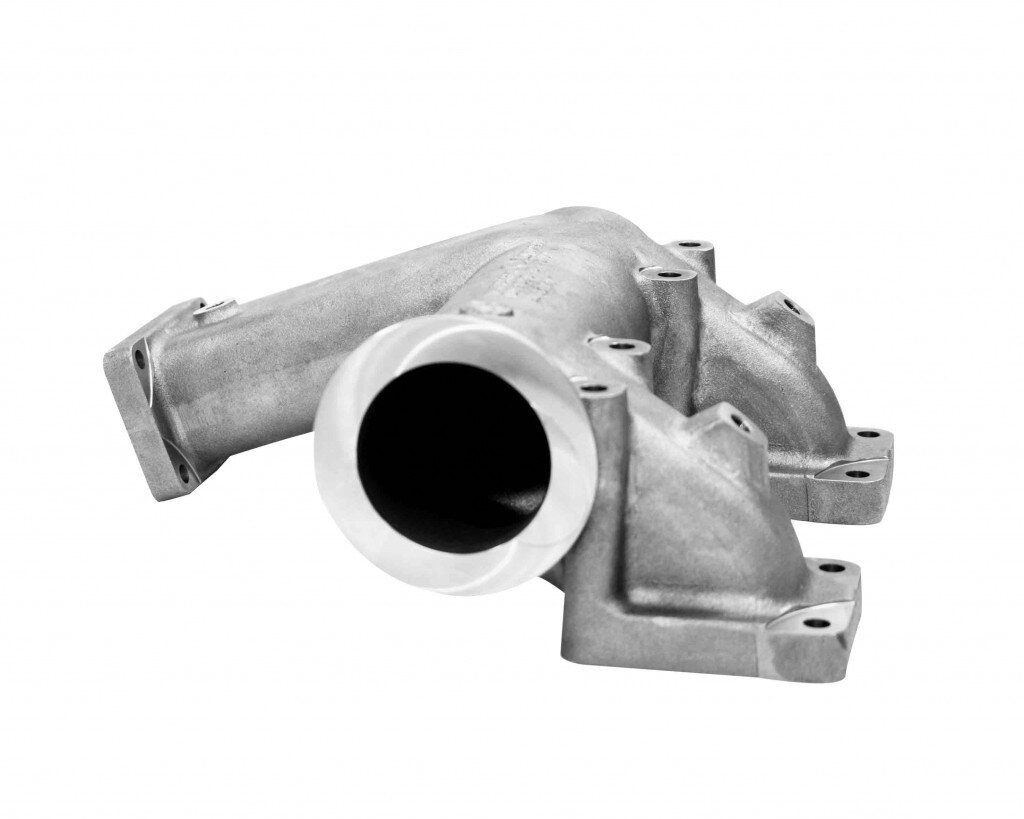SIMO
Cast iron materials intended for high-temperature applications must possess both the necessary thermal stability as well as sufficient resistance to scale formation and changes in volume. To obtain these properties, SiMo-cast iron (alloyed, ferritic SG cast iron) was developed. The carbon contained in the material is overwhelmingly present as nodular graphite chunks; this material is then alloyed with silicon (for the formation of a protective oxidation coating) and with molybdenum (to improve the mechanical properties at higher temperatures).
The protective oxide layer can be obtained through either internal or external oxidation processes. External oxidation occurs on the surface and proceeds via the slow growth of an oxide scale coating. During internal oxidation, oxidizing gases diffuse to imperfections, voids, or micro-cracks within the part, and oxidation begins at these spots. This mechanism of internal oxidation means that cast iron with spherical graphite is significantly more resistant to other forms of oxidation than cast iron with flake/lamellar graphite, as the penetration that occurs via the flake structure is no longer possible. The improved resistance to scale formation provided by the silicon is based on the formation of a silicon-oxide-rich coating, which initially hinders and eventually stops further oxidation.
The element that is most helpful for improving high-temperature tensile strength, yield strength, and above all the fatigue properties at high temperatures, is molybdenum; the effects are best with a proportion of 0.5% to 3% (although this may be higher in special cases). The European standard DIN EN 16124 categorizes 9 types of low-alloyed ferritic spheroidal graphite cast irons for elevated temperature applications that are predominantly used in applications to take advantage of their resistance to heat and oxidation.
Applications in the range up to 700° C (1290° F) traditionally include turbocharger or turbine housings, exhaust manifolds; they can also include glass moulds, as well as clamps or brackets in furnaces and forging dies (used in the reforming of titanium alloys and highly alloyed steels). For higher temperatures, the cast iron’s austenitic characteristics are more heavily developed; this allows the material to be used at temperatures of up to 1000° C/1830° F (see Ni-Resist).

